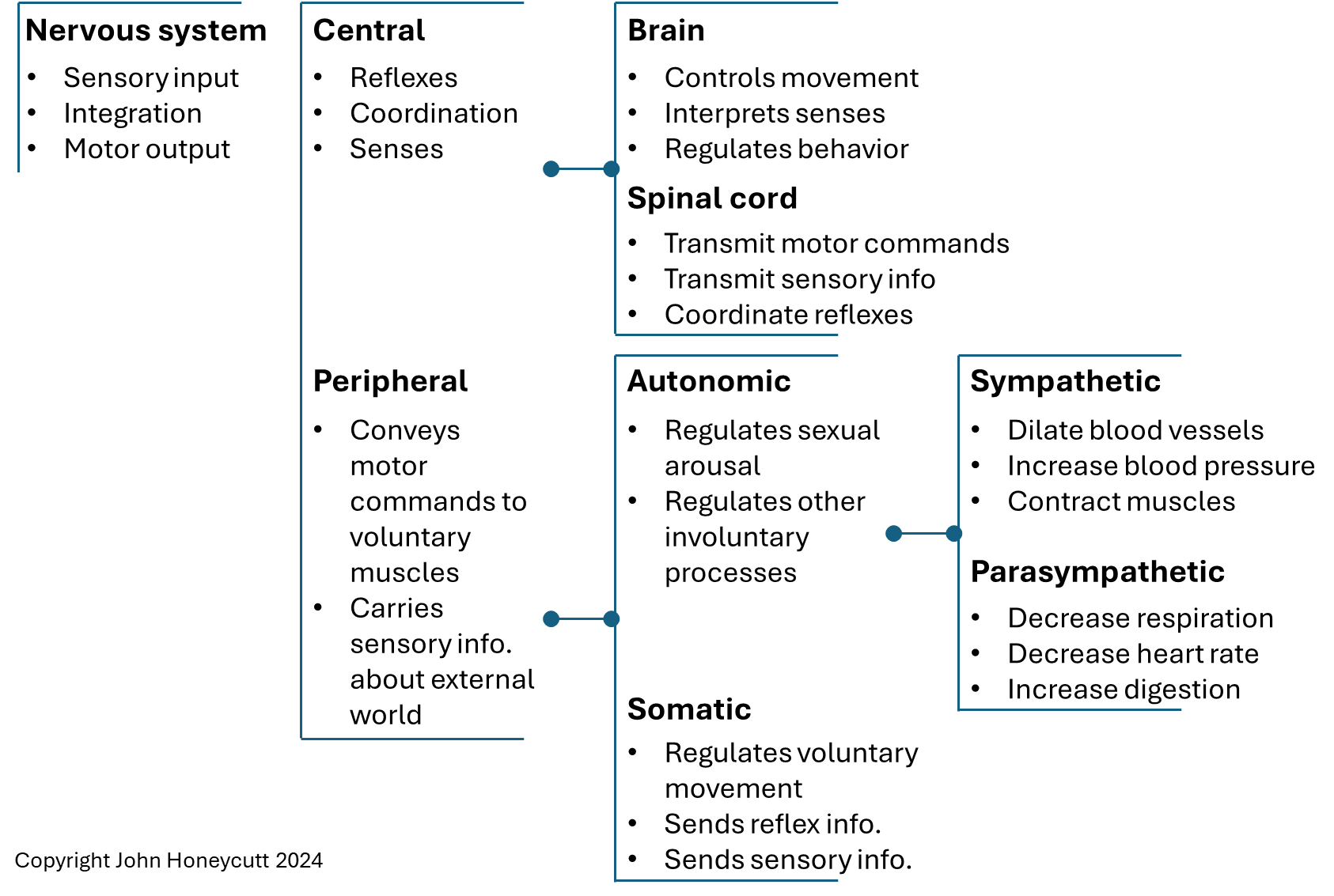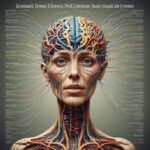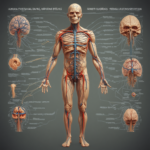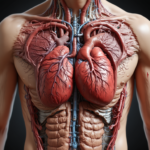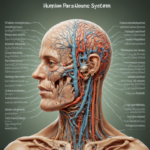Book Link 21 Parts of the Nervous System
<back next> — index
At the end of this topic, you should be able to recognize:
- Central vs. peripheral nervous systems
- Somatic vs. autonomic nervous systems
- Sympathetic vs. parasympathetic nervous systems
Nervous System: Control and Response to Environmental Changes
The nervous system plays a crucial role in controlling the body’s functions and responses to environmental changes.
The body’s nervous system has two main parts: the central nervous system and the peripheral nervous system. The central nervous system includes the brain and spinal cord. The peripheral nervous system connects the CNS to the rest of the body.
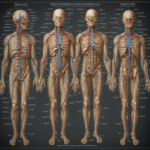 Animals have a highly complex nervous system that helps them coordinate their actions and respond to sensory information.
Animals have a highly complex nervous system that helps them coordinate their actions and respond to sensory information.
This system transmits signals to and from different parts of the body and detects changes in the environment that affect the body. The nervous system also works with the endocrine system to react to these events.
Hierarchy of the Nervous System
The nervous system is comprised of the central and peripheral systems. In turn, the central nervous system is comprised of the brain and spinal chord. The peripheral system is comprised of somatic and
How do the central and peripheral nervous systems work together to control the body’s functions?
The central nervous system (CNS) and peripheral nervous system (PNS) work together to control the body’s functions. The CNS, which is made up of the brain and spinal cord, gets information from the body and sends instructions through the PNS.
The PNS, made of nerves that link the CNS to the rest of the body, sends messages to and from the CNS. This helps the body to react to things, move smoothly, and manage different body processes. The CNS is like the control center, and the PNS is the messaging system that helps the body work well together.
What roles does the nervous system play in detecting and responding to environmental changes?
The nervous system is important because it helps us sense and react to what’s happening around us. It can feel things like temperature, touch, and pain. When it senses something, it sends that information to the central nervous system, which then figures out what to do and sends a response.
This response might involve moving our muscles, controlling our organs, or making us feel different emotions. Basically, the nervous system helps our bodies react quickly to changes and keep everything inside working just right.
Central Nervous System
The central nervous system plays a crucial role in reflexes, coordination, and processing sensory inputs from the environment.
Reflexes: When you touch a hot pan, your hand quickly pulls back without thinking about it. This rapid response is due to the central nervous system sending signals to move your hand away from the heat to prevent injury.
Coordination: The central nervous system helps coordinate activities, such as playing sports or dancing. It controls the body’s movements and ensures that other muscle groups work together smoothly.
The five senses: The central nervous system receives and processes information from the environment, including signals from the five senses. For example, tasting food, feeling the texture of an object, or hearing a loud noise all involve the central nervous system in processing these sensory inputs.
Peripheral nervous systems
The peripheral nervous system regulates touch, including sensing pain, pressure, and temperature. It also controls muscle movement, enabling activities like walking, running, and picking up objects.
It plays a crucial role in facilitating sensations, muscle control, and coordination during different activities.
When you wake up in the morning, the peripheral nervous system helps you feel the sensation of your sheets and the floor. It also allows you to control your muscles so you can get out of bed, walk, and start your day.
During exercise, the peripheral nervous system helps you coordinate your muscle movements while playing sports or participating in activities like running, jumping, and throwing. This allows you to move effectively and perform various physical tasks.
As you go to sleep at night, the peripheral nervous system also plays a role in regulating body temperature, feeling comfortable in bed, and eventually relaxing your muscles for a restful sleep.
Somatic nervous system
The somatic nervous system is part of the peripheral nervous system and is responsible for carrying sensory and motor information to and from the central nervous system. Although it is not part of the central nervous system, it communicates sensory information to it and carries out its commands.
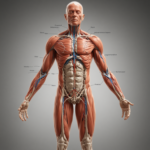 The somatic nervous system is responsible for all voluntary muscle movements and receiving sensory information.
The somatic nervous system is responsible for all voluntary muscle movements and receiving sensory information.
The peripheral nervous system includes all the nerves outside the central nervous system, encompassing the somatic and autonomic nervous systems.
The somatic nervous system enables us to control our muscle movements consciously.
In contrast, the autonomic nervous system regulates bodily functions that occur automatically without conscious effort, such as heart rate, digestion, and respiratory rate.
Autonomic nervous system
The autonomic nervous system is an important part of our bodies. It controls things that happen automatically, like our heart beating, digesting food, and breathing.
The system has three parts. The “sympathetic” and “parasympathetic” parts are described in more detail below. The “enteric nervous system” is closely related to digestion. It can operate independently from other parts of the nervous system, including the brain and spinal cord.
Of the two parts further described on this page, the sympathetic part helps our body react to stress or danger by making our heartbeat faster and slowing down digestion.
The parasympathetic part helps our body relax and digest food by slowing our heartbeat and starting digestion. These two parts work together to keep our body balanced and keeps everything keeps working without us even thinking about it.
The autonomic nervous system is a delicate balance divided into two branches: the sympathetic and the parasympathetic. The sympathetic nervous system is responsible for the body’s fight-or-flight response, increasing heart rate, dilating the pupils, and inhibiting digestion in response to stress or danger.
On the other hand, the parasympathetic nervous system is responsible for the body’s rest and digestion response, slowing heart rate, constricting the pupils, and stimulating digestion during periods of relaxation. These two branches of the autonomic nervous system work together to maintain the body’s internal balance, ensuring that essential bodily functions are carried out without conscious effort.
Sympathetic nervous system
The sympathetic nervous system, our body’s “alarm system,” is responsible for the fight-or-flight response. It acts like a superhero, increasing heart rate, dilating the pupils, and pausing digestion when we face stress or danger.
 In non-traumatized individuals, the sympathetic nervous system operates normally in response to various states of arousal. It can trigger the fight-or-flight response in moments of stress or danger, causing increased heart rate, dilated pupils, and inhibited digestion.
In non-traumatized individuals, the sympathetic nervous system operates normally in response to various states of arousal. It can trigger the fight-or-flight response in moments of stress or danger, causing increased heart rate, dilated pupils, and inhibited digestion.
However, in individuals with trauma, the sympathetic system may be dysregulated, resulting in an exaggerated response to arousal. This heightened sensitivity to stressors can lead to a pronounced fight-or-flight reaction even in situations that might not prompt the same level of response in others.
It’s important to understand that trauma can significantly impact the sympathetic system, often causing an overactive response even in non-stressful situations, leading to symptoms such as hypervigilance and anxiety.
Parasympathetic nervous system
The parasympathetic nervous system helps the body relax and digest. It slows the heart rate, constricts the pupils, and stimulates digestion.
Like the sympathetic nervous system, it can work differently in people who have experienced trauma. Trauma can lead to changes in the parasympathetic nervous system, affecting how individuals handle stress and respond to relaxation and digestion. Symptoms of trauma can include being overly watchful, feeling anxious, and struggling with emotions.
Trauma can lead to dysregulation of the parasympathetic nervous system, resulting in symptoms such as increased heart rate, hypervigilance, and difficulty relaxing.
Trauma can contribute to conditions like post-traumatic stress disorder (PTSD), where the individual may experience exaggerated “fight or flight” responses and have trouble calming down after a stressful event.
Individuals who have experienced trauma often handle stress and relaxation differently compared to those who haven’t. Trauma can lead to hyperarousal, where the individual may be constantly on edge and find it difficult to relax.
On the other hand, some individuals may experience hypoarousal, feeling numb and detached, finding it hard to engage in activities that promote relaxation. Therapy and support can help individuals develop healthier coping mechanisms for managing stress and finding relaxation.
To address the impact of trauma on the parasympathetic nervous system, some effective methods include mindfulness practices, therapy, exercise, healthy lifestyle, and social support.
Summary
The nervous system has two main parts: the central nervous system (CNS) and the peripheral nervous system (PNS). The CNS, made up of the brain and spinal cord, gets information from the body and sends instructions through the PNS. The PNS, which is a network of nerves that connects the CNS to the rest of the body, helps the body to react to things, move smoothly, and manage different body processes.
The nervous system is important because it helps us sense and react to what’s happening around us. It can feel things like temperature, touch, and pain. The CNS helps with reflexes, coordination, and processes signals from the environment, while the PNS regulates touch, muscle movement, and coordination during different activities. This allows us to move effectively and respond to our surroundings.
